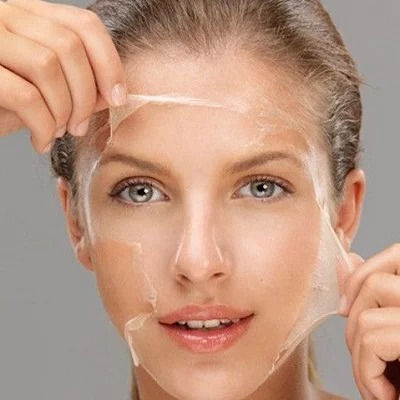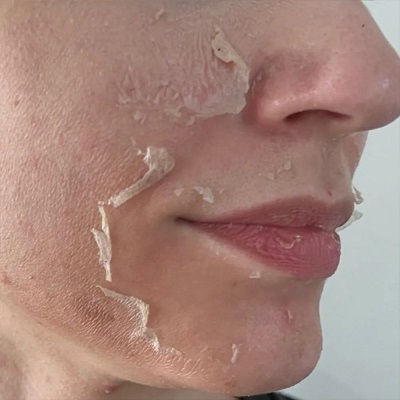What Skin Type Responds Best to TCA Peel Treatments?
- aliza khan
- Jun 17
- 4 min read
When it comes to achieving clearer, smoother, and more youthful skin, chemical peels remain a popular choice among skincare treatments. Among these, the TCA peel, or trichloroacetic acid peel, stands out for its ability to target a range of skin concerns, from acne scars to pigmentation issues and uneven texture. But as with all skincare solutions, one size does not fit all. Different skin types react differently to chemical peels—and understanding which skin types respond best to TCA Peel in Oman is essential for optimal results.
This article explores the relationship between skin type and TCA peel effectiveness, offering expert guidance for those considering this powerful treatment.
What Is a TCA Peel?
A TCA peel is a medium to deep-depth chemical peel that uses trichloroacetic acid to exfoliate the outer layers of the skin. It works by triggering a controlled injury to the skin's surface, which encourages the body to regenerate new, healthier skin cells.
TCA peels are widely used to treat:
Acne scars and blemishes
Sun damage and pigmentation
Fine lines and wrinkles
Uneven skin texture
Enlarged pores
Given Oman’s climate—sun-drenched with high UV exposure—many residents struggle with pigmentation and sun-related skin issues. As a result, TCA peel treatments in Oman have gained popularity for their transformative effects.

Which Skin Types Benefit the Most?
Skin types are generally classified according to two key systems: the Fitzpatrick skin type scale (which measures skin’s reaction to the sun) and skin characteristics like oiliness, sensitivity, and thickness. Let’s explore how each responds to TCA peels.
1. Normal to Combination Skin:
Best RespondersNormal and combination skin types usually respond exceptionally well to TCA peels. These skin types are typically resilient and less reactive, making them ideal candidates. The skin can tolerate the chemical exfoliation without excessive inflammation, and post-peel healing tends to be smooth.
Why it works: Balanced oil production and stronger skin barriers allow for faster recovery and more noticeable results.
2. Oily and Acne-Prone Skin:
Highly BeneficialIndividuals with oily or acne-prone skin often see dramatic improvements after a TCA peel. The acid helps dissolve buildup in the pores, reduces active breakouts, and fades post-inflammatory hyperpigmentation. TCA peels can also reduce oil production over time, which is especially beneficial in humid climates like Oman’s.
Caution: Those with active, inflamed acne may need a gentler pre-treatment or wait until the flare-up subsides.
3. Dry Skin:
Moderate RespondersDry skin types can benefit from TCA peels, especially when targeting issues like rough texture, fine lines, or age spots. However, extra care is needed in post-treatment recovery, as dry skin tends to be more sensitive and slower to heal.
Tip: Hydration and barrier-repairing products should be a central part of aftercare.
4. Sensitive Skin:
Cautious Approach NeededSensitive skin is more prone to irritation and adverse reactions. While a TCA peel may still be an option, it requires a low concentration and careful application, ideally under professional supervision. Patch testing and slower treatment cycles are advisable.
Warning: Redness, prolonged peeling, and discomfort may be more likely in these cases.
5. Mature Skin:
Excellent CandidatesTCA peels are often used for age-related concerns, making mature skin a strong candidate. They stimulate collagen production, reduce the appearance of fine lines, and brighten age spots. Many mature clients in Oman seek TCA peels to reverse sun damage and restore youthful radiance.
The Fitzpatrick Skin Type and TCA Peels:
The Fitzpatrick scale categorizes skin from Type I (very fair) to Type VI (very dark). This classification helps determine how likely a person is to develop pigmentation issues after a peel.
Types I–III (Fair to Medium skin tones): Respond well to TCA peels with minimal risk of post-inflammatory hyperpigmentation (PIH).
Type IV (Olive skin tone): Can benefit from TCA peels, but should be closely monitored to prevent PIH.
Types V–VI (Brown to deep skin tones): Require extreme caution. Lower-strength peels or alternative treatments may be safer. These skin types are more prone to developing dark spots post-treatment.
Residents of Oman often fall within Fitzpatrick Types III–V, which means a customized approach to TCA peels is necessary to balance safety and effectiveness.

Factors to Consider Before Choosing a TCA Peel:
Skin Concerns:
The reason for getting a TCA peel matters. Those targeting acne scars, discoloration, or signs of aging tend to benefit most from medium-depth peels, which are often suitable for a range of skin types.
Peel Strength:
TCA peels come in different concentrations (commonly 10%–35%). Sensitive or darker skin types may start with a lower strength to reduce the risk of side effects.
Sun Exposure:
Given Oman’s sunny climate, strict sun protection post-peel is essential, especially for those with higher Fitzpatrick scores. Without sunscreen, the risk of pigmentation increases dramatically.
Professional Guidance:
Choosing a reputable TCA peel clinic in Oman ensures that your skin type is properly evaluated and the treatment is performed safely.
FAQs:
1. Can people with darker skin tones safely get a TCA peel in Oman?
Yes, but with caution. Lower-concentration peels and pre-treatment plans may be needed to avoid post-inflammatory hyperpigmentation. Always consult a qualified skin professional.
2. Is TCA peel good for acne-prone skin?
Absolutely. TCA peels are excellent for minimizing acne scars, unclogging pores, and improving overall texture in oily or acne-prone skin.
3. What’s the best TCA concentration for sensitive skin?
Sensitive skin usually responds better to lower concentrations, such as 10%–15%. Always start conservatively to avoid irritation.
4. How long does it take to see results?
Most people begin to see results within 7–10 days after peeling is complete. For deeper concerns, a series of peels spaced over several months is recommended.
5. Are there any skin types that should avoid TCA peels entirely?
While most skin types can be treated with care, individuals with very reactive or compromised skin barriers (e.g., eczema or rosacea) may be better suited to gentler alternatives.
6. What’s the downtime after a TCA peel?
Mild peels may have minimal downtime (2–5 days), while deeper peels can cause redness and flaking for up to 10 days.
Final Thoughts:
TCA peels offer an effective solution for a variety of skin types and concerns. While normal, combination, and oily skin often respond best, even sensitive or darker skin tones can benefit when treated properly. The key is personalized care, proper peel strength, and expert oversight.



Comments